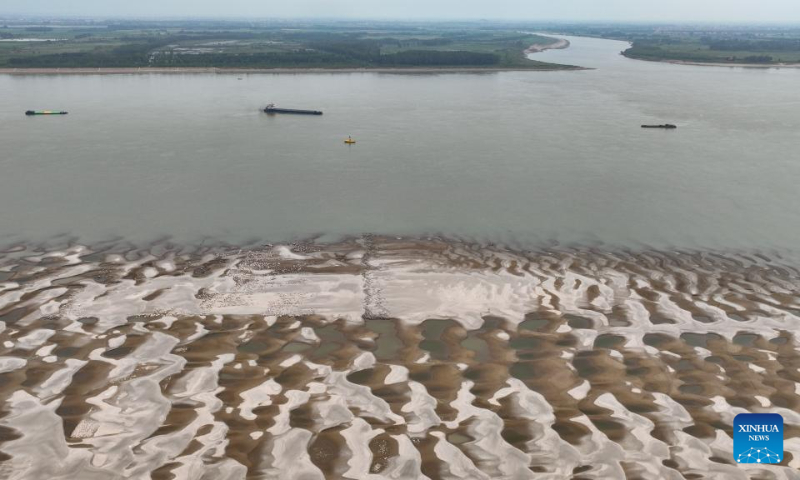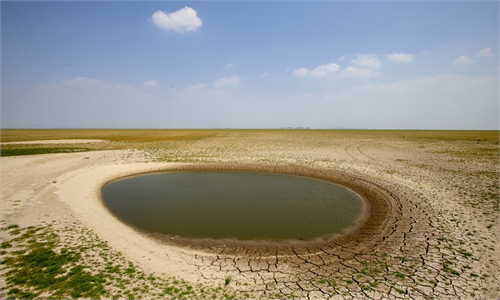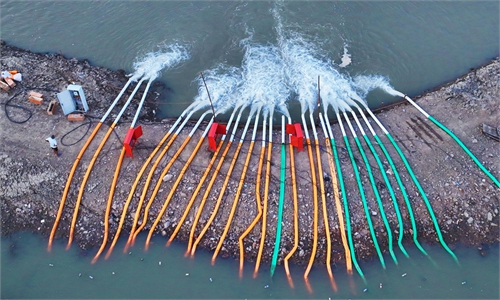
Aerial photo taken on Aug. 24, 2022 shows a section of the Yangtze River in Chaisang District of Jiujiang City, east China's Jiangxi Province. Due to continuous high temperature and less rainfall, the water level of Yangtze River in some parts of Jiujiang City has fallen significantly. Jiangxi Province on Wednesday raised its drought emergency response from Level IV to Level III starting from 10 a.m. as the drought continues. (Xinhua/Zhou Mi)
Chinese authorities have studied the risk situation of natural disasters for November and warned of drought, forest fire and other risks in some parts of the country, according to an official notice published by the Ministry of Emergency Management (MEM) on Tuesday.
Experts said that the warnings will help guide local officials and farmers to make necessary preparations to reduce potential losses.
The drought in the middle and lower reaches of the Yangtze River basin is expected to continue in November, after an unprecedented summer drought hit the southern part of the country, according to the MEM notice about a recent multi-agency meeting on the natural disaster risk situation for November.
In October, most of the country's major rivers saw low flows, and the water levels in the main stream of the Yangtze River, as well as the Dongting and Poyang lakes, stood at the lowest levels for the period compared with previous years, according to the MEM.
Precipitation is 20-50 percent less than the same period in previous years along the middle and lower reaches of the Yangtze River, and the drought in the south of the Yangtze River will continue. There is a high possibility of continued droughts in the summer, autumn and winter, said MEM officials.
It is also predicted that the temperatures in some regions, including East China's Shanghai, Jiangsu and Anhui, Central China's Hubei and Southwest China's Chongqing will be 1 C to 2 C higher in November compared with previous years.
Along with the drought risk, some parts of the country will continue to see risks of forest fires, geological disasters and other risks such as low temperatures, snow and freezing weather, which could have a negative impact on agricultural production as well, according to the MEM.
The alert for weather risks released by the authorities will be helpful for local governments and farmers to "take precautions" and "conduct more drought-relief efforts" such as strengthening agricultural irrigation, Li Guoxiang, a research fellow at the Rural Development Institute of the Chinese Academy of Social Sciences, told the Global Times on Tuesday.
Li said that with such precautions, the impact on agricultural production will be limited and farmers' losses could be reduced. Solid work involving the autumn and winter planting periods is expected to proceed smoothly as well.
China has harvested 1.191 billion mu (79.8 million hectares) of autumn grain, roughly more than 91 percent of all autumn crops, according to the official data.
More than 85 percent of winter wheat and about 86 percent of winter rapeseed had been planted as of Monday, according to the Xinhua News Agency.
A farmer surnamed Lin in Ninghai, East China's Zhejiang Province told the Global Times on Tuesday that the autumn harvest is proceeding smoothly. Another farmer in the same county surnamed Wang said that he has finished the planting of winter wheat, and work went smoothly.



